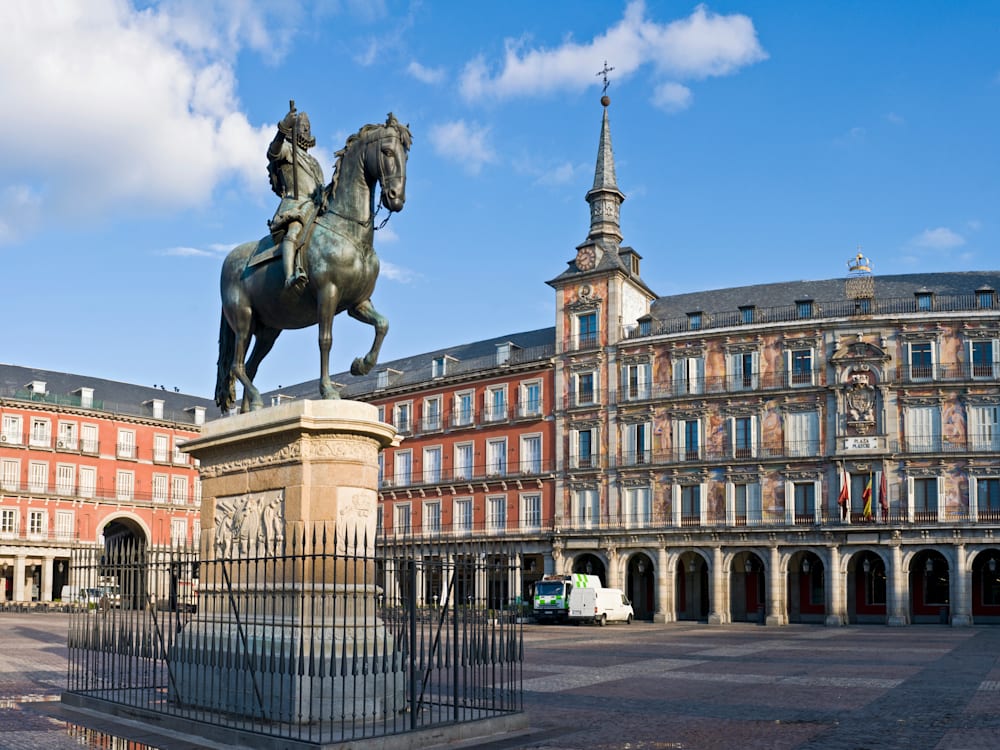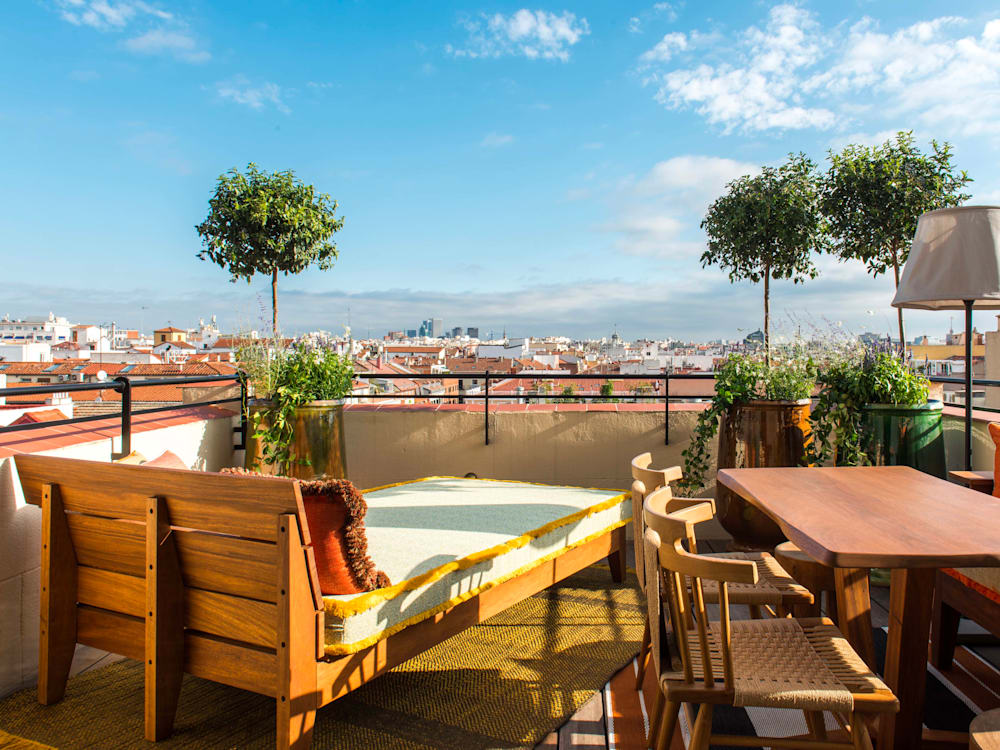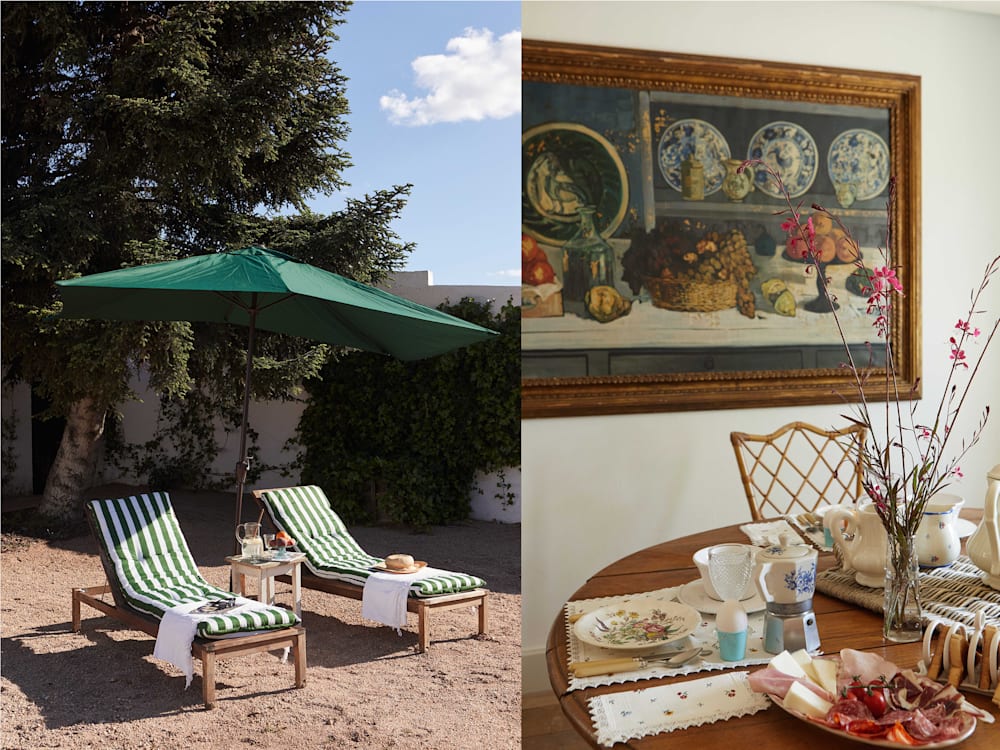Spain’s cities are always guaranteed to be fun, but for all of Seville’s sun, Palma’s proximity to island idylls and Barcelona’s centrally located beach (monuments and sand? We’re sold), Madrid often gets overlooked.

Granted, it may not be as pretty as its more flamboyant counterparts — with a concrete-heavy business district and no shore anywhere in sight — but the sangria still flows, there are churros aplenty, flamenco rules the night, and the artworks hanging in the Prado make the city worthy of a visit alone. And technically, the regal El Retiro Park has a body of water: a lake, which may not be the Costa Brava, but it does have rowing boats.
In any case, all sensible people flee the city in high summer for the coast, since temperatures reach egg-frying-on-car heights, but in spring, autumn and winter, it reveals itself gradually as a worthy rival to Barcelona and co. We give you the perfect combination of city bustle and bucolic bliss with a twin-centre trip to Madrid and its country counterpart Segovia, just an hour’s drive north…
TOWN
A recent arrival to the Spanish capital is Brach Madrid, which is one of those unassuming luxury hotels whose delights unfold during your stay. It’s housed in the former ministry of education on Gran Vía, the city’s main thoroughfare. That might make it sound corporate and strip-lighty, but dispel those thoughts, because this is Madrid, and in place of the swivel chairs and threadbare carpets you might find in an English administrative office, this building is grand and ornate, with stained-glass windows and a wrought-iron central staircase.

As with the French-born Evok Collection’s sister stay Brach Paris, Algerian chef Adam Bentalha, has crafted a menu of North African-inspired delights, from ‘mesfouf’ (a fine couscous) to huge hunks of roast meat or a whole baked sea-bass to share. Also on offer at the restaurant, which has been modelled on a grand European café, is a sucrine (little gem, en anglais) salad, dressed with Parmesan and welcome zinginess.
With the help of superstar designer Philippe Starck, the brand excels at clever design details — at the bar, bottles are wrapped in woven straw, in a nod to more traditional rural counterparts in Spain. In the basement, there’s a small, succinct spa, aptly named La Capsule, which manages to squeeze in a hyperbaric oxygen chamber and flotation tank along with a swimming pool. It has the mild air of a medical facility, with almost everything, including the labcoat-like staff uniforms, a dazzling white.
From this central setting, it’s easy to explore Madrid on foot — must-visits are the Prado, to see its collection of paintings by Goya and Velázquez. And flamenco may have originated further south, but it’s just as popular in the capital. We chose the modern Flamenco de Leones, where the artistic director — who bears more than a passing resemblance to Charlie Sheen, but with longer hair — was available for a dance class pre-show. He taught us how to clap, stamp and clack a castanet convincingly, though my own shoulder-grazing braid, snake hips and Cuban heels were sadly lacking.
COUNTRY
An hour’s drive north of the city is the university town of Segovia (not to be confused with The Princess Diaries’ Kingdom of Genovia). In the countryside south of the centre, Hotel Caserío Aldeallana is a family-run finca with just five bedrooms, making it perfect for exclusive-use bookings. The hotel is signposted from the main road, so be sure to take this exit, otherwise you might find your car at a padlocked gate, on private land or a little too close to a nearby military base.

It’s out of season when I visit and I’m the only guest — Arturo the groundskeeper is on hand to light the fire and show me around, so we muddle on in my pidgin Spanish and his equally limited English. The hotel was designed to be a homestay for guests in search of a country house and it doesn’t disappoint. Vintage copies of House & Garden are laid out in the hacienda’s lounge; I pick up a copy dated January 1999 and enjoy a surreal trip back in time during the editor’s letter, which describes the countdown to the new millennium.
Mealtimes are equally relaxed and homey, with a small-scale operation in service for breakfast and dinner. From the kitchen, Arturo brings me a starter of burrata and tomatoes, followed by steak then chocolate pudding. As I blow out the candles in the dining room and head upstairs to bed, I’m starting to wish this really was my hacienda.
In the morning, I set out on a walk around the vast estate, which has various other residences on its acreage, as well as a pool with a view close to the hotel. It’s very rustic, dotted with crumbling outhouses filled with old furniture. Opposite the courtyard is a chapel, with a tomb marked Aldeallana giving Yellowstone Dutton Ranch vibes.

There are various palaces to visit nearby, including Palacio Real de La Granja de San Ildefonso and the Royal Palace of Riofrío. In Segovia, the aqueduct is hard to miss; and at the other end of town, the turrets and towers of the Alcázar are princess-pleasing (maybe this really is what Genovia was modelled on). Come lunchtime in the centre of Segovia, be careful what you order: roast meats are the dish of the day here and entire pig’s heads have been known to be served to unsuspecting (but hopefully carnivorous) visitors. The square next to the cathedral is a dreamy spot for lunch with a view of the Gaudí-esque domes and spires.
As I hit the motorway back towards Madrid’s vortex of an international airport, I’m grateful for my brief sojourn at the Aldeallanas’ countryside casa, which is a world away from the city. We all need a bit of bustle sometimes, but clean air, wide open spaces and a slower pace of life are more often just what el doctor ordered.
See our full collection of Madrid hotels, or discover more out-of-town stays that are just close enough to the action







